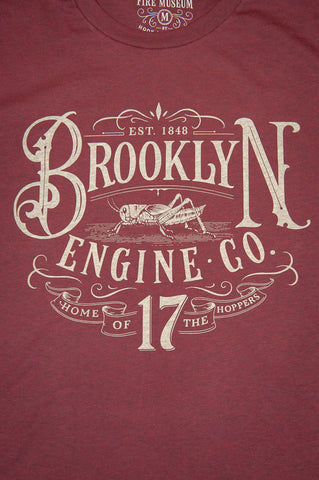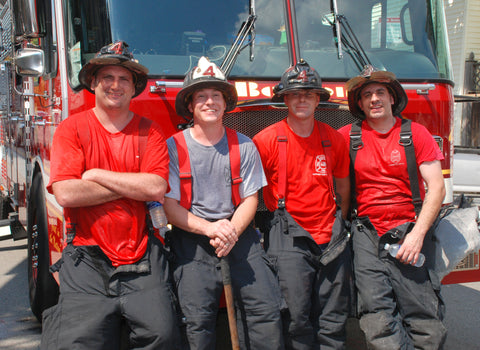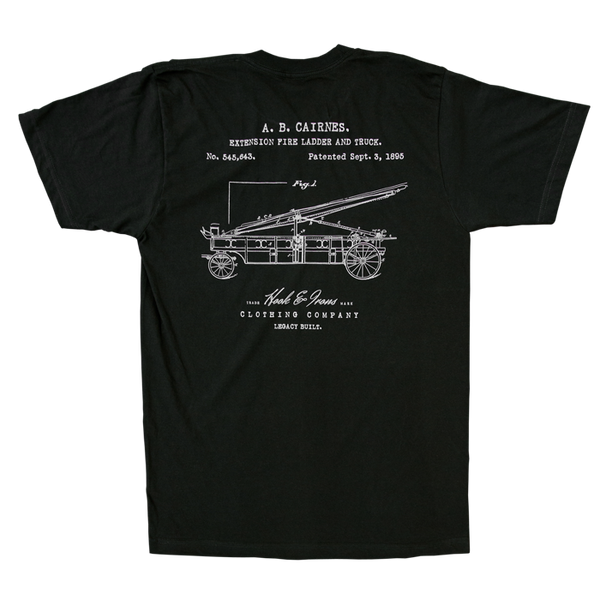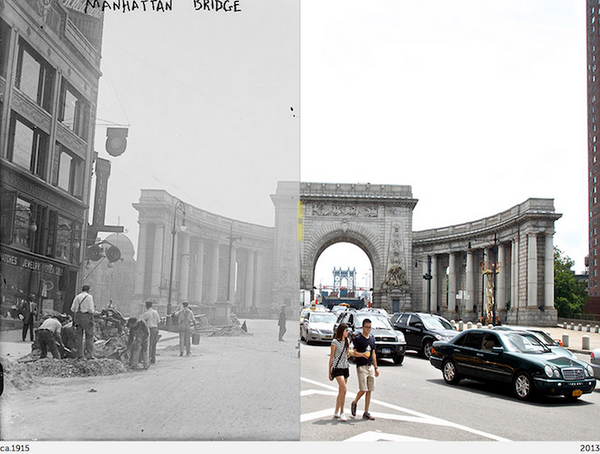Hook and Irons
The Original New Yorker - The Birth Of The Modern Fire Helmet April 22 2019, 0 Comments
The modern fire helmet as we know it was invented by H.T. Gratacap, a luggage maker from New York City.On The Importance Of Independent Fire Instruction February 07 2018, 4 Comments
A few years ago members of Firehouse 2 were sitting at the dinner table talking excitedly about attending the upcoming Orlando Fire Conference when the Battalion Chief walked out and after listening for a few moments to our conversation said, "I don't know why you guys would go to Orlando for training. You belong to one of the largest fire departments in the country. You have everything you need right here."
Photo Credit: Dennis Walus
The comment by the Chief killed the conversation, but didn't curb our enthusiasm. A few weeks later we were in Orlando taking forcible entry classes with Mike Ciampo, Truck Co. classes with the always aggressive Orlando guys, and a grueling RIC class with Jim McCormack. The classes were intense and fun. We returned home with a few bruises but had learned more in three days in Orlando than we had learned in three years of 'official training' from our own Department.
Why is that the case? Why hadn't we been exposed to this and many other things from our own department?
Many years and many conferences attended have allowed a few observations and conclusions about the independent fire instructors that teach throughout the country and why they are vital to the growth and advancement of the fire service.
Existing in a vacuum
Independent instructors do not live in the vacuum that you and I and the members of our own departments do. Many of these instructors travel extensively teaching students from departments across the country. As they teach, they share their information, but they also pick up tidbits of knowledge from different departments and incorporate the most valuable parts into their future lectures and drills. They also glimpse into other departments operations and develop ideas on what works and what doesn't.
They are often the spark that creates groundswell change around the country. It is their global perspective that allows departments to change decades of tradition for a more progressive approach. Often it is their knowledge and perspective that allows a return to common sense. I cite the return of the smooth bore nozzle as one of many sweeping changes that instructors have ushered forth. Another incredible and simple change that swept the fire service is the "Seattle Shuffle". It seems crazy, that when I was going through the academy many moons ago it was an offense akin to murder if you ever straddled the attack hose, yet crawling on your hands and knees while looking down was accepted and common practice.

New and varied tip ranges in response to smoothbore resurgence
Ambassadors
While the word is loaded, there isn't a more appropriate term for what the instructors of the American Fire Service do every day. They spread their message and they provide fine examples of firemanship with their attitude and their love of the fire service. As a combined force, they are more powerful than NFPA standards and have arguably saved more firefighters lives in the process because they give you tools you can use when you need them most.
Ambassadors of the fire service should not be confused with preaching. Many of the best instructors do preach, but it is always grounded in knowledge, sound tactics, and instruction. In terms of the person I should be whether at work or home--well I'll just leave the preaching to my priest. Everyone else who preaches should be able to deliver 'the goods'.
Ownership
No single instructor owns the methods or the tactics they teach, but they do own the intellectual capital they have earned with their blood and sweat from years of teaching. They teach for you to learn and share amongst your peers. They do not teach so that you can steal their lecture and start teaching outside your own department. If you're not sure if you're stealing or just sharing, just ask yourself if you are in it for personal gain. In the end, I've found that most instructors are extremely generous sharing slides and information. They want you to spread the word, they just want to be acknowledged for their work and effort. Your students should know that you've taken the time to validate and practice the methods you are teaching as well as their source.
Photo Credit: Dennis Walus
Wealth
I can't think of an instructor who has become wealthy traveling and teaching the 'good word.' Often their dedication to the fire service causes problems in other parts of their lives. They are wealthy in other ways though. They have friends all over the world and a place to rest their head wherever they are. But more importantly, these few, have etched their names into the fire service by molding it and spreading a message that guides not only our performance but how we can be 'smartly aggressive' by arming us with their knowledge and wisdom. If they keep at it and devote their careers to it, maybe they'll be remembered among the likes of Andy Fredricks and others like him. When your name lives on beyond your career, that is a wealth money cannot buy.

For years I've been to conferences all over the country and I still think of that Chief's comment, the error of his logic and the idiocy of his blind confidence. I thank God that I didn't let him influence me.
Yours Truly,
A Grateful Student Of The Craft
7 Lessons Seniority Has Taught Me June 08 2017, 8 Comments
A firefighter's worst critic, in all cases, should be himself. No matter the error or the accolade, constant self-evaluation and a global reflection of actions and inactions after the fire should direct your thoughts on what you missed or what you could do better next time. What follows are a few truths I have experienced in my own career.

1. Losing track of time on a fire ground is a dangerous thing.
For me, this is the single most difficult thing to maintain. Personally, I have lost time in both ways--compression and elongation. I can remember a time where I watched my firefighters struggle to force a steel door and made them abandon a perfectly good plan, only to move on to a plan that was not as good. In the end, after I had calmed down and when I listened to the tapes, I realized that an unreasonable amount of time had not passed and I had let my anxiety amplify the passage of time. Lack of experience had caused me to doubt the tactic.
Conversely, I have begged the Chief for a 'few more minutes' during a firefight when afterwards I realized that I was so focused and wanted my tactic to work so badly that I let time get away from me.
So what is the answer? We can't keep glancing at our watch while we're working, but we can fight to stay calm--fight to control our breathing and fight to stay in control and aware of the time. Experience brings calm. Calmness brings clarity. And clarity allows you to know if a plan is working or if it should be abandoned. This goal is even more difficult and sometimes impossible for the many short-staffed crews around the country whose officers have to work performing two and three jobs in addition to managing the safety and efficiency of their crews.
2. When things are going wrong, don't go with them.
If you have been in the fire service for any length of time, you are guilty of this. Usually, it's stubbornness or timidity that is the culprit. Admittedly, I have been guilty of this as well. As a new Captain I operated on a fire in an apartment building with an enclosed hallway where I watched the attack crew with a junior officer try and deploy their hotel roll on the fire floor in a dirty hallway with zero visibility. I knew this was wrong. I knew it was more than likely doomed to fail and I did not stop it because I did not want to step on the officer's toes. At that moment, I became just as guilty as they were for choosing a tactic that would more than likely fail and was dangerous to boot. The fire, which could have been extinguished in under 15 minutes, took over 45 minutes to put under control. I learned a lesson that day that I will take with me to retirement.
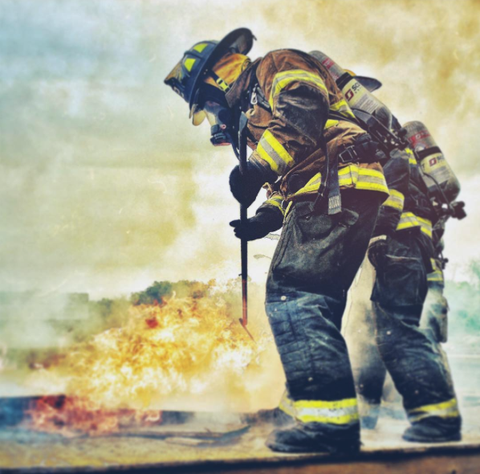
3. Manipulating the word 'Safety' to validate inaction is inexcusable.
There is an epidemic in the fire service right now and there are instructors across this country railing against the safety officers and various studies. They are causing firefighters to second guess cautious aggression in the name of safety. The hallmarks of these officers are:
Using the benefit of hindsight and complete information afterwards to demonize an action that was taken with incomplete information.
They use studies and articles to validate their points, but they have never actually tried to replicate the studies, either on the fireground or in the training tower. They operate on the faith of the author and the study and treat it as gospel. Well, I have faith in God, but the rest of it, I will trust after I verify.

More importantly, these 'safety officers' are high enough in the administration to effectively change the fighting posture of your department. This may be good or bad based on many variables, but to continue the analogy, I would want to be on the department that trains for the 1st or 2nd round knockout, rather then a victory at the end of a fight by decision.
4. Festina Lente.
The latin phrase translates to, hurry slowly. I have found no other phrase that better captures the attitude that firefighters should strive for on the fireground. The term 'hurry slowly' allows firefighter to manage time and allow the countless clues and signs to be internalized before decisions are made. 'Hurry slowly' allows the experience of bread and butter fires to be tempered with a cautious check to see if anything has occurred that would make this fire different from the others.
Here are some great examples of 'Festina Lente' in action:
- Conducting thorough 360.
- Having a good look at smoke production and volume.
- Making a concerted effort from the exterior to locate the fire inside.
- Asking a quick question or two to an escaped occupant on location of fire, other victims, and hazards.
- Slowing your apparatus as you approach the fire to study the building and set up proper placement. This might even mean exiting the apparatus and guiding the apparatus through smoke and other hazards.
- Maintaining accountability of your crew at each new compartment you enter inside the house.
Festina lente and fireground discipline go hand in hand. For me, it is the frame of mind that I'm always trying to achieve and the two words "Hurry Slowly" which singularly are opposites are what marry the mind and body on the fireground--move with a sense of purpose, but keep your mind able to constantly evaluate and analyze the situation.
5. Computers and technology have taken us away from the critical aspects of the job.
By now, I'm not sure there is a fire department in this country that hasn't embraced online training. The stronger departments use it to supplement hands on training. The weaker departments use it as a check box to show all the work that is being done and to maintain certifications that take a department's limited manpower away from meaningful training.
The danger in online training is that the computer creates a disconnect between a department and their firefighters and it standardizes a job that is anything but standard.
Additionally, anyone with half a brain should question the validity of computer training meant to teach hands-on skills unless the hands-on skill is 'how to click a mouse'.

Great athletes are not created by reading play books. They are created with hard work and repetition which creates muscle memory and confidence. Is the fire service so different?
6. Lead your firefighters in. Follow them out.
Their are many adages that accompany leadership and good leaders, but for the fire service this term is both metaphorical and real. As an officer, it was always my job to show them that I wouldn't make them do anything I wouldn't do myself. In a dark and hot house when we couldn't find the fire I would occasionally, if the situations dictated, put myself slightly in front of the nozzleman feeling through the smoke for that hallway or door--sounding the floor and guaranteeing safe passage for my guys. It is vital to be a good detective, find the fire, and take the burden off of your firefighters shoulders. Additionally, good officers lead and direct the search. They send their firefighters to search rooms, but never so far away that they can't be reached by voice, sight or touch. And when the task is complete, they follow them out. We have lost firefighters on my own department and on many others around the country because the officer of the crew did not follow this adage.
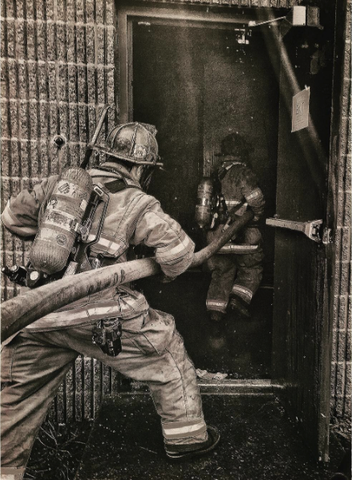
7. Firefighters may respect the badge, but they trust experience.
The fire department ladder is only three or four rungs depending on the department you work for. It is a much shorter climb than employees who are clawing their way to the top of corporate America. Ascending through the ranks of the fire service can be done on many career departments in less than fifteen years and with only three tests. In some departments a motivated employee can become a Chief in as little as twelve years. What that means is these employees have reached their terminal rank before they've reached the midpoint in their career. The question begs to be asked: Can a Chief who has more of a career ahead of him than behind be experienced enough to command the respect of the men and women who are in the trenches everyday? The answer is maybe, but I would say it's doubtful. Have they been on busy units their entire career? Have they packed as much valuable experience into their time as possible? Or have they used that same system in which they catapulted to the top to hide away from Operations and keep from running calls and gaining that daily experience that is so necessary?
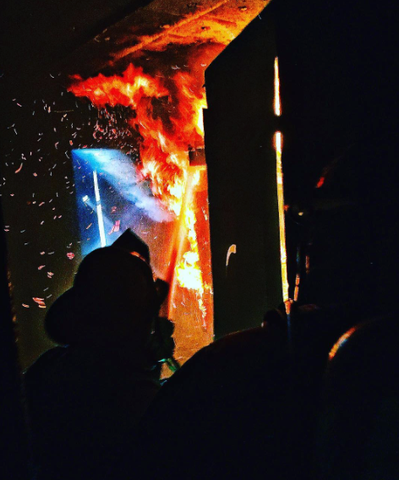
Firefighters know. And they will let you know the first time you command them to do something that you learned in a book that contradicts and conflicts with the realities that they have faced.
Conversely, there is no better feeling than getting a 'thank you' from a senior firefighter whom you have guided correctly and allowed them to operate in a way that parallels their experience and knowledge and acknowledges and utilizes their capabilities. That 'thank you' from a respected peer is the only accolade I've ever hoped for in the fire service.

***All photos were generously shared by Captain Brian Bastinelli of the Harrisburg Bureau of Fire.
Brooklyn Engine Co. 17 July 30 2016, 0 Comments
Last year, I had the honor of donating to the NYC Fire Museum in the name of Dennis Smith (author of 'Report From Engine Co. 82). At that time, after meeting with some of the staff, we decided to make a NYC Fire Museum tee based on their archives and designed by Hook & Irons. The result of our first effort is Brooklyn Engine Co. 17.
The design is based on a banner that is displayed in the museum. It shows the active roll of all the members of Engine 17. The banner is beautifully drawn. We wanted to take elements of the banner and use them to capture the spirt of the company and its story. Below is a picture of the main part of the banner.

After reading more about the history of the company, we decided to focus on the engine's logo--a grasshopper.

The grasshopper was unique and the story behind the 'hopper club' was very interesting to me.
In 1849, Engine Co. 17 purchased a Philadelphia patterned 'piano box' style engine which quickly earned the name 'haywagon' because of its long and flat appearance. The brake and the pump levers were located on top of the engine and the men who climbed up and down it so skillfully were said to look like grasshoppers. Even after they purchased a newer engine the name stuck. 'The Hoppers' kept their name for the rest of the company's existence. At its high point, Engine Co. 17 boasted 75 members and their firehouse was regarded as one of the most beautiful in the country.

The resulting design is our best effort to create a station logo and design as if the company were still operating today. We wanted everything to be hand-drawn and we wanted to bring the story of the 'hoppers' back to life.
It has been an amazing experience to be able to access the museum. If you're visiting the city, you should stop by and support them. You can even pick up a Hook and Irons shirt in their gift shop, our first retail location.
If you'd like to purchase Brooklyn Engine Co. 17, you can click here.
You can read more about the history of the Brooklyn Fire Department by following this link.
I Will Leave the Light On For You - A Message For Police Everywhere July 18 2016, 7 Comments

Inspired by @rfdtruckie I have placed a blue light in front of my house.
Dear Officer,
Tonight when you patrol the streets in the dark of this lonely night, blind to where the next danger lies in silent wait, I will leave the light on for you.
Tonight as the world and even our own president passes judgement on your profession, know that I understand your frustration as you must and do wait patiently for vindication. I will leave the light on.
Tonight when you rush to help those who don't appreciate you, who don't understand you, and who will be the first to condemn you, I will leave the light on for you.
Tonight as you take the world's misdirected anger and bear it time and again on your shoulders, I will leave the light on for you.
Tonight in your darkest hour, when you drive past my home, keeping watch over my family and my neighbors, I want you to know that you are in my thoughts and prayers. I will leave the light on for you.
Tonight, as your own family sleeps peacefully in their bed, I know it is for them which you risk life and body. And as you wonder time and again if the job is worth it, I will leave the light on for you.
Tonight as you question why you do what you do, look at my light. The light is on for you and know you are not alone. Know that the people who appreciate you the most will probably never need you. The people who understand your plight will most likely never call for your service. Good people everywhere are pulling for you and want you to know that the light is on for you.
You are not alone.
When I wear my uniform, I witness the anger pointed toward you. I have stood by your side as you mediated conflict after conflict in case after case where there are no winners only degrees of loss. I have watched as you arrested sons and daughters, husbands and wives and countless others in order to stop violence and restore order--and I have seen the unjust anger toward you from those you are protecting.
I have tended to your wounds, cleaned the bite marks, washed the spit from your face, and covered bullet holes in your body. I have driven you to the hospital on more occasions than I care to remember. As a firefighter, I stand in solidarity with you. I understand you. And when you pass the firehouse in the darkest hours of night, know that our light shines for you.
You are not alone.
I will leave the light on for you.
You are not alone.
How To Lose Good Firefighters In 10 Simple Steps September 06 2015, 24 Comments
During my time as a firefighter, I have enjoyed the best and suffered the worst a firehouse has to offer. I have met some of my best friends and endured months with people I wouldn't trust out of my sight. With that in mind, I thought I would compile a list--an easy to follow guide for the dirtbag, to ensure that any good firefighters that bid your station or who are placed in your house will not want to stay. Just follow these 10 easy steps and you'll be sure to send those valuable employees packing and looking for greener pastures.
1. Don't eat dinner together. Crawl into the dark nooks of your firehouse and only come out to eat alone. Bring your own special vegan-soy-protein infused meals, separated into individual tupperware containers and stored in one huge collapsible cooler that takes up half of a refrigerator--and make sure to never share. Take turns in the kitchen, one at a time, cooking and preparing your own personal meal and eat by yourself while you scan your Facebook page dreaming of other places you'd rather be at that moment.
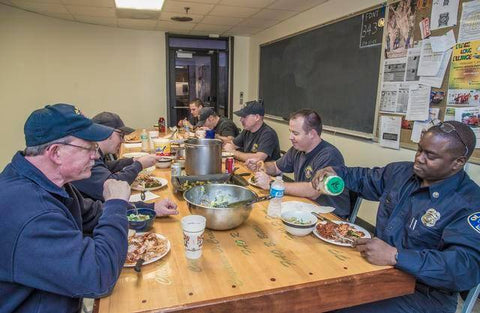
Olathe FD
Eating dinner--breaking bread with your co-workers is sometimes the only chance busy houses have to sit and converse and to strengthen the bonds that good friends and firefighters have. Many of the problems I've had, have been put into perspective right there while we joked and laughed and took comfort in each others lives and stories.
Side note: If you have a special diet because you just have to get on that firefighter calender or you realized that gluten makes you weepy, then you can still sit and eat together. You can eat the part of the meal that is acceptable to you and supplement it with your own. The important part is that you make the effort and you see the value of a shared meal with some of the most important people in your life.
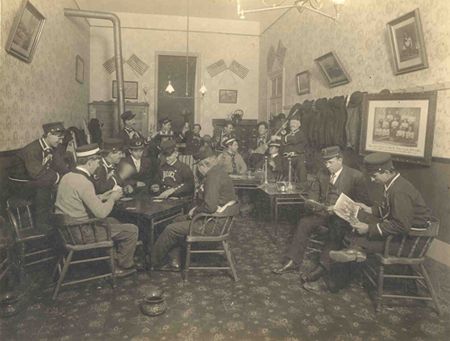
2. Do exactly what is expected of you and nothing more. Look and see who is doing less and who is getting more than you. See who drives the truck more than you. See who sits in the better seat at the dinner table. Make sure you show up right before shift change and whatever you do, make sure to never hold over.
These people are personal behavior accountants, bean-counting the actions and in-actions of all their peers. They can recall with absolute clarity what each person has or has not done. The problem with these types is they never put the magnifying glass on themselves.
Good firefighters understand that cameraderie comes when you are doing more than is asked, when you are helping your brother with the most mundane tasks and when you suffer, execute and surmount obstacles together. Trust comes after that.
3. Stop Training. Complain at drill time. Make excuses. Drag your feet. Whine and roll your eyes when you do the same drill again that you've been doing for the last fifteen years.
There will come a point in everyone's career when they get comfortable--when they feel like they've got a good handle on their job. And that is all well and good, but a good firefighter is always looking to be a little uncomfortable. He wants to be challenged. He wants to learn something new, even the smallest bit of information that may make his job a little easier and a little safer.
Training provides discovery. Training provides purpose. Training provides growth. You should always try to remain a student of the fire service. The day you finally graduate from the school of fire should be your first day of retirement.
4. No Recognition. No matter what happens. No matter what the new guy does, do not compliment him. Do not recognize the effort. He's just doing his job, right?
Verbal recognition is one of the only ways we as officers and we as peers can reward firefighters. We can't offer them monetary incentives or days off from work. We can't sweeten their retirement package, but we can tell them they did a great job on the nozzle, or that they blasted through that security door like lightning. A compliment from someone you respect satisfies more personal needs than we would care to admit.
In this line of work we often fail even when our efforts are outstanding. The house burns, the person dies, and there is no effort that could have changed the course of what happened. Sometimes the only way we can make it better is by recognizing the efforts of others (even in failure) and giving them hope that the outcome won't always be negative.
5. Micro-manage. One of my friends and one of the best drivers on our department was once told by his new chief not just to catch a hydrant, but 'how' to catch a hydrant at a fire. After the fire, the order that was given and the way it undermined his knowledge and his skill, bothered him so much that he gave up his bid a week later, citing that, 'if he is going to tell me how to do my job at a hydrant, then he can get someone without a brain to do it for him.' At the time, I thought the move was extreme, but later I realized that he knew that particular Chief would never trust his efforts and he would never feel happy with his work. That Chief has only needed two or three of these steps to lose almost all his good firefighters.
Good firefighters want to be given orders, but they also want to do it themselves. They don't want you to hold their hand while they do it. They want the opportunity to show you, 'I got this. Don't worry.'

6. Ignore Feedback. You're the senior man, right? You're the officer, right? If you wanted feedback from the junior guy, you'd ask for it.
When a firefighter notices something is wrong, don't just ignore him. When he tries to show you a different way to do something, don't just blow him off. If they want to try something new on an evolution or deployment try it out, let him discover what you may already know. Who knows, he might even be on to something and you may not only improve the evolution, but improve the cohesion of the crew. Sometimes the best you can do here is to provide a framework for them to try out their theory or suggestion. And if you do shoot down the idea, at least you took the time to consider it and try it out.
Side note: Regularly ignoring feedback is a great way to keep firefighters from speaking up on emergency scenes. If their opinions are not valued in the station, then why would they be considered during a time of danger? There are firefighters who will follow you knowingly into a bad situation because it's their only way of saying, 'he doesn't listen to me anyway, so I might as well let him f*** up.'
7. Be dishonest. Say one thing and do another. This is a fantastic way to lose a good firefighter. If you can't be trusted, there really isn't much more to say.
8. Do not support growth. Belittle your firefighter. Use training time to show how terrible they are when they make a mistake. Do not work to make them better. Don't let them act as officers and don't support outside education.
9. Sabotage the efforts of others. If someone takes on a project to improve the truck or the station, tell them 'they are all ate up,' or tell them to chill out, the department is not paying for that. Better yet, tell them they're wasting their time by going to off-duty training.
Photo Courtesy of Bill Noonan
The best firefighters are supporters. They are team players. Remember you're not always going to be 1st in. You're are not always going to be the guy carrying the baby from the burning building. Every football team only has one quarterback, but it is the effort and the support of the whole squad that brings the victory. The great firefighters are often the unsung heroes, the never-mentioned guys that made the fire go so smoothly. Take pride in that.
If you drag your feet when you're third due. If you belittle the efforts of the young officer putting on his first drill, then you're well on your way to getting rid of that great firefighter.
10. Disrespect yourself, your crew and your firehouse. When you're off duty, act like an idiot. Be selfish. Make the same mistake over and over again. Do something stupid and when you come back to work be stubborn and arrogant. Whatever you do, don't apologize.
Humility seems to be one of the most difficult things for a firefighter to cultivate. Maybe because we have to be confident to do what we do, but eating a slice of humble pie after your blow-up the shift before earns a lot more respect than pretending it didn't happen at all.
If you're looking to ruin your station, if you're dying to get rid of that motivated guy, and if you'd rather hide in your cube the whole day, follow these simple steps and you'll be well on your way to finding more people that are just like you.
A Fireman Gives Thanks November 26 2014, 1 Comment
This holiday, I've compiled a short list of things I am thankful for. Some I've taken for granted in the past and some I hold dear to me every day. These are in no particular order of importance:
1. The Halligan: Sixteen years into this career and I'm still amazed all the time at how Hugh Halligan created a nearly perfect tool. It's a step, a pry bar, a striking tool and I'm pretty sure if you're very careful you can use it to play vinyl records and remove splinters.

2. My Crew: I've been the bid-in Captain at Aerial 11 for a year and have been blessed to fall in with the best group of guys an officer could ask for. My crew is mature. They are seasoned and they are true professionals. They are the perfect mix of everything a fire truck needs. I've got a car buff, a grease monkey, a joker, a common sense guy, a straight talker, and a bulldog. Truth is, neither one is any of those by himself, but together they are all those things and more.
3. Coffee: This is my life-blood and is as part of my daily routine as waking, sleeping and eating. I am thankful for coffee. I am thankful for the Bunn coffee maker in the station and I'm thankful of the never-ending supply that is on hand. I'm also thankful that it's so good for you, because truthfully, how can anything this good be bad.
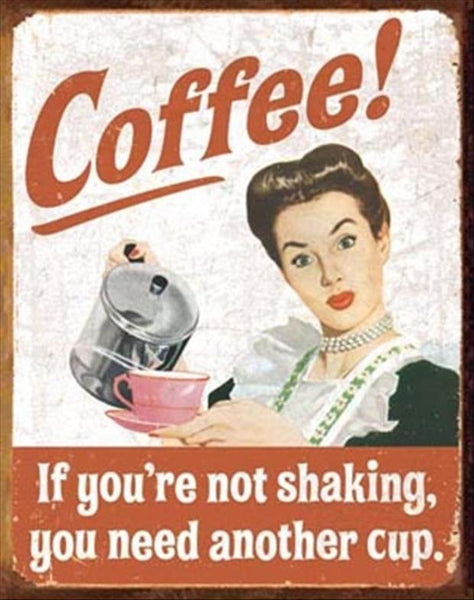
4. The Chief: This is something I had always taken for granted until this year. Truthfully, you can't appreciate a truly great chief until you've experienced a truly terrible one. Unfortunately, our battalion is on it's fifth Chief in 12 months. Most have been mediocre, one has been terrible and all of them have not hidden the fact that they would rather be somewhere else. So, to Chief Indy Morgado, Chief Mike Simon, Chief Danny Gonzalez, I say thank you. To the others, I say that you truly have done a disservice to the rank. I've got more to say about this, but I'll save it for a future blog.
5. The Federal 'Q': Really is there a sweeter sound to a firefighter?

6. The Kitty Burger: Many an afternoon, morning, and evening and late morning and early evening hunger pains have been cured with the kitty burger. Also known as peanut butter and jelly, it is the official power bar of the fire service. It is the protein powder for the guys that don't shave their arms and it is the perfect snack for firemen, because it can be prepared in under forty-five seconds and consumed on the way to a call. If you're looking for a light version of this sandwich, take one piece of bread--pb on the upper half, jelly on the lower, then fold. Kitty taco.

7. Youtube: This is a constant source of entertainment and education in the fire station. Youtube has done more to bring the fire service together than any other thing I can think of. It still amazes me that I can watch a fire from LA County, click a few more times and watch the brothers in Houston tackle some serious business. Then click a few more times and watch the Crazy Hot Matrix. Youtube has proven to me that firefighters across the country are largely the same--a little crazy (bout half a bubble off center), damn funny, and sometimes heroic.
8. Modern Fire Boots: When I started, we were issued the yellow martian moon boots--the rubber, guaranteed to slide off a roof, unable to leg lock a ladder boots. I thought that was as good as it got until I tried on my friend's Haix. Wow! I will never go back and I'm happy to tell anyone that it will be the best money you ever spend in the fire service.

9. The Firehouse Dinner Table: It has been said before in many places, but the dinner table is where stories are told, friendships are forged, lessons are learned, and the brotherhood is born. I am thankful for dinner with the guys. On some days, it is the only time we all get to be together. It is the place where I have had the most laughs and felt most at peace these last sixteen years.
10. My Family: I know, this one goes without saying, but I'm going to say it anyway. You should feel just as sad to go to work as you are excited and you should be just as ready to leave in the morning as you are ready to hang for one more cup of coffee. You should know that while you're away, your spouses are juggling everyday problems that are much more frustrating, long lasting and difficult than any fire you'll ever fight. You are able to be who you are because of them and your success depends on their support.
Happy Thanksgiving everyone. I wish you all success, laughter, and fire. The ones you have to put out and the ones that drive you to be better than you are in 2014.
-George
Tools Of The Trade - Birth of 'The Hook' November 25 2014, 2 Comments
Earlier this year while visiting a neighboring firehouse, I saw that they had displayed a very cool shadow box with all of the different knots used in our fire department. I really liked the idea and all of the other 'knot boards' I've seen. I thought that it would be nice to see a board with many of the different types of hooks used in the fire service around the country laid out in a 'knot board' style so the viewer would be able to see all the different variations next to each other. As far as I knew, I had never seen anything like this before.
The first problem was finding the right designer who would be willing to research and sketch the different hook variations and lay them out in an interesting manner. I chose Adam Weaver for this project because not only is he a very talented hand-letterer, he is also extremely talented at creating authentic and original illustrations. The only problem was that Adam is not a firefighter. He did not know how important this tool is to us or it's many uses. How could he feel as passionately as I do about our tools and our history?
Fortunately, I've learned that Adam is a life-long student of many subjects and after the Keys To The City project, I know that he relishes learning the finer details of a subject rather than the broad strokes.

First, we set out choosing which hooks to use. I tried to pick not only the most popular hooks, but ones that are unique to certain parts of the country. After we settled on the subjects, Adam got to sketching. We tried to never stray too far from the 'knot board' feel. I wanted the design to be educational as well as visually interesting.

In the end, I feel Adam created a design that is truly original and unique--a design that I hope most firefighters would be proud to own.
I want to thank Adam for being so patient and taking the time over these past months to learn so much about our world. We have become fast friends and I hope Hook and Irons can tempt him into creating more designs for us in the future.
As for me. . . Well I hope you guys dig all the care, dedication and time that went into this one. And, as I always say, 'Wear it with pride.' And this time, since we're offering a limited edition print, you can 'display it with pride' as well.
True Grit - Texas Born November 20 2014, 2 Comments
Being an indie brand and trying to survive out in the real world with the big fish has its own challenges. There is no way that Hook & Irons can compete with big apparel companies. We don't have the budget for advertising and we don't have the staff to do all of the things I'd like to do. My idea from the very beginning has been to reach out to other indie brands that I respect and admire, offer up a collaboration and see what comes of it. This way the little fish can swim together.

One of Paulvilles Great Tees
I have been a fan of Paul McCreery for about a year now. I found Paulville Goods in the same way most good things happen on the internet--as you're randomly reading and learning about something else. I checked out his site, read his story and ordered a couple tees. All hand-drawn by Paul, and all hand printed by Paul, one at a time in Austin, Texas.
Around the same period, I started to notice what a great following we have in Texas and I wanted to do a design that is Texas inspired. I reached out to Paul. We brainstormed for a while on some imagery and phrasing. A few days later he turned over the 'True Grit' design. Simple, bold and perfect for Hook & Irons, this is the first design in a series collaboration for us.
Pic of Paul inking the design
Final Design
We chose 'True Grit' for two reasons. First is the obvious cowboy reference. Second is, I'm not sure there are two words that better describe the American Firefighter. We hope you like the design, and if you're looking for some other killer designs and unique gifts for this holiday season, swing by Paulville and pick up a couple of his tees. You won't regret it.
-George
One of Paulville's latest tees
Birth of the Aerial Tee November 16 2014, 1 Comment
While scouring the internet and reading a historical essay on the San Diego Fire Department, I found a few photos that caught my eye. The first was a patent drawing By Chief A.B. Cairnes for an Aerial firefighting apparatus:

The second was a photo taken a few years later of the Aerial after it was constructed:

The aerial stayed in service with the San Diego Fire Department for the next fifteen years, and it's inventor, Chief Cairnes served as San Diego's first fire Chief.
Reading through this portion of San Diego's Fire History inspired me to make a design out of the patent drawing. The first obstacle was finding the right person at the San Diego History Museum to propose the collaboration. Next was finding the right graphic designer to make the patent drawing fit a t-shirt but still keep the heart of the original drawing in tact.
The final design is simple and bold. We printed it on three different colored shirts to give them each their own feel.
As with every Hook and Irons design, the purpose is to celebrate the history of the American Fire Service; the achievements and the legacies of those who have come before us with designs that are humble and clean. Much thanks to the San Diego History Museum for being such a great partner on this collaboration and to Chief A.B. Cairnes for his contributions to the American Fire Service.


A Brief History of the Pompier Ladder May 18 2014, 19 Comments

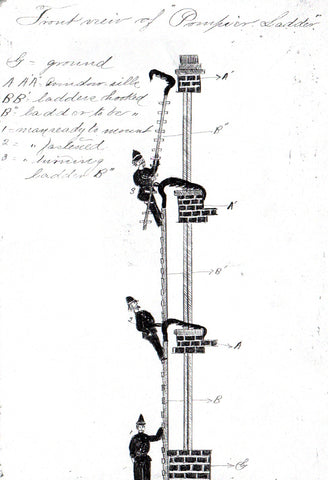
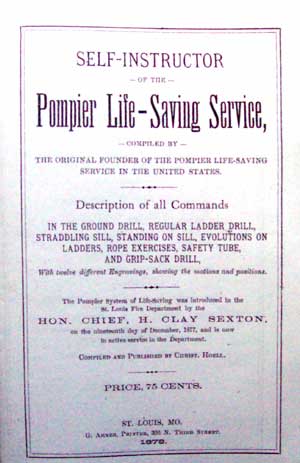



We're All Zombies, And the Assholes Are Winning May 01 2014, 7 Comments
I've been a little jaded lately--confused and distressed. I haven't been able to put a finger on the pulse of it. It's everywhere and nowhere. It doesn't feel like pressure or anxiety, or doom, or fear--just sadness really. But I'll hold off on that for a minute.
There are things I love with a passion. I'm no different than most of you and the older I get, the more I realize how similar I am to most of my peers. So my list is probably a lot like yours.
In order: I love my family to pieces. My wife and my children are my reason and my life. There is no stronger statement. Next, I love the fire service and my department. The feeling is not the same as the ones I have for my family, it's more like the feeling of possessing a valuable but hidden gift. Maybe like finding ten dollars in the gutter and putting it in your pocket--that feeling like you've got something lucky and special that chance and good fortune brought you. The only difference is the ten spot is always there. Every morning when you put your work pants on, and shove your hands in your pockets, there it is again, the feeling of it--the luck of it. It never goes away for me. I'm lucky to love my work, my job and my craft.

I love other things as well, but this is the core of it. Everything else depends on these two things for me.
So why do I feel the way I do today? Why do others tell me they feel the same in different ways? There is something, maybe an up-welling you could call it. Maybe a shift. There is definitely a change. Everyone feels it and no one can quite put their finger on it. I know this because I see good people all around me grasping desperately for it, trying their best to keep tradition, goodness, and the brotherhood alive. You can find them and their followers on outposts at the busiest and best firehouses and all throughout the internet, but it doesn't seem as if we're winning, what it feels more like is comfort knowing you're not alone, like maybe you've found some other souls that realize the ship is adrift.
This is the difference.
One of the many things that Dads can do for their sons is point out who the assholes are. I know my Dad did. We'd get cut-off by a driver with road rage and my Dad would go, "Look at that asshole." Or we'd be at a job site and he'd point to the lazy guy sitting by the cooler and he'd say to me, "See that asshole, sitting down while everyone else is working." Or I'd hear the stories about shitty officers at the firehouse, self-serving 'assholes' who didn't care about the guys or the job, and it was all very clear. You could see the jerk, you could compare him to the others and you had a viable example of somehow or some way that you shouldn't be. And as best you could, you learned to avoid these types and not become one yourself.
Now, with the internet, texts, e-mails, tweets, Facebook posts, audio and video recordings and every other immediate thing out there, the assholes are lining up, wreaking havoc, hiding behind their curtain and are never accountable to the face or name of the person they're slamming. They line up as virtual vampire armies to weigh their 'very important' opinions and suck the life out of someone. They get all the feeling of power without ever risking looking someone in the eye and witnessing the pain they cause. No, they get to sit with their crooked spines and downcast eyes and type the thoughts that mostly would be better locked up.

Before e-mail
I was lucky enough to be hired before computers took over the fire service. I knew who the assholes were. It didn't mean I didn't respect them, hell, sometimes I respected them more because sometimes you have to respect the assholes that tell it 'like it is,' and are not afraid to hurt your feelings. Because the next time you work with them you wanted to be able to look them in the eye and say, 'yeah, I got it.'
The fire service was clear and it was easy. I loved the directness--the black and white of it. Do this. Don't do that. Do it this way. See that guy, he's a real POS, but he is the guy you want next to you on the fire ground. And the Chief, well he was the boss and he fixed things with just a few words and he stayed out of the guys way and when he asked for something, you jumped on it.
After e-mail
After e-mail and the introduction of electronic communication the fire service changed. I've learned and still learn alot to this day about it, but I've settled on some personal truths.
- Firefighters (at least the ones you respect) are the types of people who like to be told, face to face what you want--what you like and what you don't like. They want to be treated like adults and spoken to face to face, even if the news is tough. I'm not sure how they do it in the private sector, but I believe we are the last breed of an older generation that values actions and handshakes, slaps on the back and an atta' boy every now and again.
- Firefighters are generally terrible writers, that's why they carry axes and not pens. With that truth established it is safe to say that most firefighters should save writing e-mails and texts for those dire circumstances when they are unavoidable. I have found the e-mail to any one person to be almost completely avoidable and after learning a few hard lessons I now only write e-mails to groups to deliver a message.
- When a firefighter receives an e-mail directed at him and only him, he automatically gets defensive. We learn early in the fire service that anything written can be used against you later. So, a seemingly innocent e-mail is often interpreted quite differently.
- Leadership or management by electronic communication is a fallacy, it is often a joke and it is the laziest way to lead. Furthermore, it is almost always a recipe for failure.
It is easy to get sucked into the computer. It is easy to get drawn into the black and white of numbers and so-called 'accountability tracking'. It's easy to click the mouse and pass judgement, make assumptions and learn 'everything you need to know' instantly, but you're missing so much.
The reasons for the numbers and the numbers themselves all come from people that are still out there sweating and trying their best to make it work. They're out there struggling, making the best of the situation. Get out there with them, talk to them, ride with them, empathize with them, then be tough, be a jerk, be nice, be funny. Just don't be the asshole behind the curtain with the crooked spine and the downcast eyes.
Those guys have yet to fix anything.
-George
www.hookandirons.com

101 Rules For The New Fire Officer April 18 2014, 19 Comments
I've gotten such a great response for the 101 Rules for the New Firefighter, that I've written a list for the newly promoted officer. I've compiled the list from personal experience and through reading and conversations with respected peers. Feel free to add to the list in the comments section.
1. Be calm. You are now the person who is in charge of keeping your crew safe. Your nervousness and excitement will never cause a positive response in those that are following.
2. Never ask a firefighter to do something you are not willing to do yourself.
3. A promotion is not a reason to stop cooking. You have not attained royal status yet.
4. Have your driver slow the truck down 2-3 blocks before arriving at a fire. This allows you to look for hydrants, visualize the scene, and slow your mind down enough to process what you're about to see and do.
5. A leader is best when people barely know he exists, when his work is done, his aim fulfilled, they will say: we did it ourselves. —Lao Tzu
6. Arrive to work at least a half an hour early. If your firefighters arrive before you, then show up earlier.
7. Make your drills meaningful with achievable goals.
8. Participate in your drills. You are not a general. You are a fire officer.
9. Admit your mistakes to your crew. They know you're not perfect. Don't pretend to be.

10. Lead me, follow me, or get out of my way. — General George Patton
11. You will see evil. You will see senseless tragedy. It is your responsibility to help your crew cope and understand it. It will also be your responsibility to recognize when they are not coping well.
12. When mistakes are made, take the blame. You are, after all, their leader. Their shortcomings are yours.
13. When good things happen, give credit.
14. Always have money in your wallet. No one wants to wait for the guy making the most money to go to the ATM.
15. Only pick the fights you know you can win. Be decisive.
16. Don't be afraid to bend the rules to serve a greater good.
17. Outstanding leaders go out of their way to boost the self-esteem of their personnel. If people believe in themselves, it’s amazing what they can accomplish. —Sam Walton
18. Empower your driver. He is your strong arm, your life line, your enforcer, and your confidant.
19. It's easy to say yes. A good leader knows how and when to say no.

20. Don't take the tools from your guys. Give your firefighters the chance to be successful. Guide them and make sure they are acting safely. They will be insulted if you take the tool and their chance to complete the task away from them.
21. Leaders think and talk about the solutions. Followers think and talk about the problems. —Brian Tracy
22. You are going to be criticized. Do what you know in your heart is the right thing and you will be fine.
23. Always work for the better good of the whole, not what is best for you.
24. Great leaders are almost always great simplifiers. They are people who can cut through argument, debate, and doubt to offer a solution everybody can understand. —General Colin Powell
25. Don't take shortcuts.
26. Don't be offended if you are part of a practical joke. Be worried if the guys don't joke with you at all.
27. Be approachable.
28. Remember birthdays, the names of spouses and the children of your co-workers--take an interest in their personal lives.
29. When knocking on a door for routine calls (EMS or otherwise) step to the side of the door. Many firefighters have been shot through the door by startled or scared occupants.
30. Learn to gauge the emergency effectiveness of your crew. Not all crews can perform at the same level.
31. Don't be afraid to ask a firefighter what they are bringing to the table.
32. It is better to lead from behind and to put others in front, especially when you celebrate victory when nice things occur. You take the front line when there is danger. Then people will appreciate your leadership. —Nelson Mandela
33. Seek out the busiest trucks.

34. Leaders aren’t born; they are made. And they are made just like anything else, through hard work. And that’s the price we’ll have to pay to achieve that goal, or any goal. —Vince Lombardi
35. Empower your firefighters.
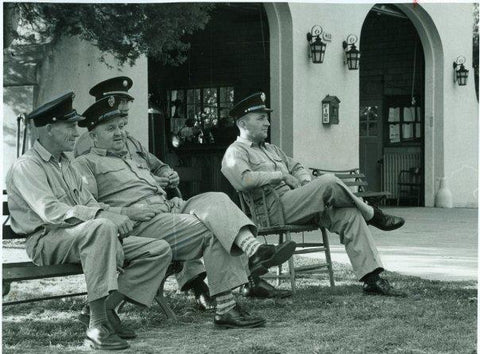
36. Observe your crew, their moods and their actions. It's not your job to make their bad day worse, but to show them a way out of it.
37. It's okay to joke and play jokes. It's not okay when those jokes are exclusionary or make the member feel like an outcast.
38. Have your own coffee mug, make it a big one and don't let anyone else touch it.
39. Don't get mad when they freeze that same coffee mug in a block of ice.
40. Just because you're behind the nozzle man on the fire, does not mean you are feeling what he's feeling. Trust his words and his actions. Sometimes he needs your confidence to make that final push and sometimes he needs you to recognize a change in tactics is needed.
41. Give your plan a chance to work.
42. Time becomes compressed on a fire scene. It's your job to mark time accurately.
43. The driver does not need you to hit the air horn and the Federal. He only needs you as a second set of eyes and as an occasional navigator.
44. Do not tell the driver how to get to an address. Do counsel your driver if he gets lost and does not ask for help prior.
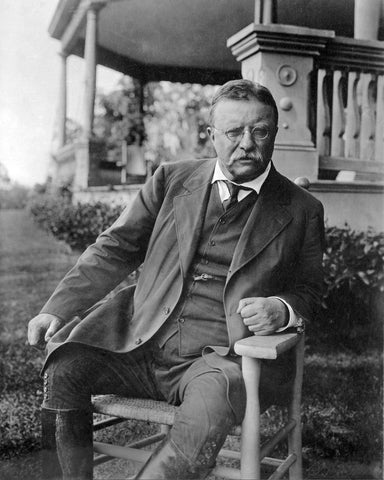
45. The best executive is the one who has sense enough to pick good men to do what he wants done, and self-restraint to keep from meddling with them while they do it. --Theodore Roosevelt
46. Never underestimate the power of common sense.
47. Sometimes the smartest thing to do is man up, and muscle through it.
48. We don't work with calipers, rulers and levels. We work with hooks, pry bars and axes. Fast, efficient and effective is more important than exact and perfect.
49. Stay hydrated.
50. One of the most important jobs you will do on scene is control the tempo of the work that is being done. No one mentions it, but everyone feels it.
51. Wear your seat belt and make sure the guys are wearing theirs.
52. If you have pride in your truck and your station, you will attract like-minded people.
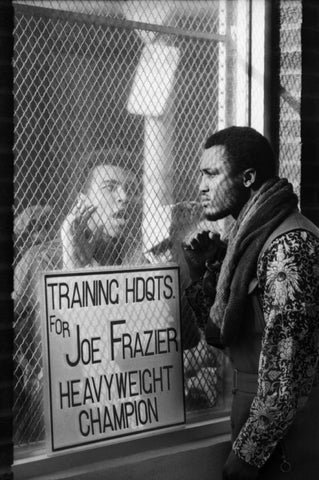
53. It's fine to talk smack as long as it's with your neighboring station. They need to know who the best crew in the battalion is.
54. Our chief want is someone who will inspire us to be what we know we could be. --Ralph Waldo Emerson
55. Take a structural collapse class and read Brannigan's Building Construction for the Fire Service.
56. In this order; you take care of your crew, your station, then your department.
57. Every EMS call is a chance to study building construction and layout. It is also a chance to recognize hazards from the inside out.
58. Your job is to remove doubt and build confidence.
59. Attend at least one fire conference a year. It will help you stay current on the latest tactics and techniques.
60. For as hard as it may be, you can not let the failures of management, union, or contract outwardly affect your demeanor. Firefighters take a cue from their officers. If you are negative. Your firefighters will be too.
61. If time permits, take a power nap. You'll be thankful you did at 3am when the crew is expecting your best.
62. If your budget permits, buy leather boots and a personal flashlight.
63. If you are on shift for the holidays, it is your job to make that day special for your second family. Coordinate the holiday meal, gift exchange, family time and/or whatever the station needs to make that day the best it can be.
64. You are not expected to know everything, you are expected to be able to find the answer or solution for almost everything.
65. Do not undermine the chief, even if you disagree with his decision or action. Tell the guys that you will talk to him and try to find out why he acted the way he did.
66. Small disagreements should be handled quickly and decisively even if it makes you the bad guy for the moment. Small unchecked problems become larger ones without intervention.

67. Before you commit your crew to a dangerous situation, be sure you've done your best to set yourself up for a successful conclusion.
68. Never write a correction, counsel, or shortcoming in an e-mail, particularly if you can deliver the message personally. The most misinterpreted communications are electronic in nature. Body language, tone of voice, and the necessity of looking the person in the eye are lost.
69. Don't be afraid to write an e-mail to your crew commending them on a job well done and cc'ing your supervisor with the message. This is an e-mail that is always well-received.
70. Do whatever you have to do to stay on the good side of the mechanic. Bring him water and coffee, offer him lunch or anything else that shows him that you appreciate the effort he's putting into your rig. They will work miracles for you if they think you're worth the effort.
71. You should not do personal business on truck time. If you do, don't say no when the firefighters ask you to take them somewhere for personal business.
72. Don't be afraid to give the fire a dash from the outside if there is something delaying your stretch into the interior. It may allow you the extra time you need to get the job done.
73. In a word, the best quality a leader can have is integrity.
74. A good plan executed in the moment of truth, is better than a perfect plan executed too late.
75. A good leader is a person who takes a little more than his share of the blame and a little less than his share of the credit. —John Maxwell

76. Always leave room for the aerial pieces.
77. Always talk to the police that spotted their vehicle in front of the fire scene. It's not their fault God didn't give them common sense.
78. Now you're in charge. The time for complaining is over. Fix the problem or do your best to explain why it's FUBAR.
79. Complaints go up, not down. Additionally, not every complaint from your firefighters is worth your time or effort. Sometimes they just want to vent or be heard. In those cases, just listen. Sometimes the complaints are personal in nature. Don't be afraid to tell them so. If you try to fix everything, you won't fix anything.
80. In the morning, look at the roster of the neighboring units, judge who is effective and who is not. Knowledge of that on a fire scene may help keep you safe or affect a decision you are trying to make.
81. Buy yourself a custom shield. You studied your ass off. You deserve it.
82. Sometimes great command is quiet command. There is no need to use precious air time on the radio just to hear yourself talk.
83. Make all radio communications clear and concise.
84. Watch fire videos. All kinds. There are lessons everywhere.
85. A new rookie in the station is a great excuse to go back to basics with everyone. Most firefighting skills are perishable and training the new guy or gal is a great chance for everyone to knock the rust off.
86. The rookie should never be drilling alone. You and the crew should be geared up doing whatever it is you are asking them to do.
87. The best leaders create a 'shared vision' that followers can rally around and share in the work to complete the goal.
88. It should be the officer's habit to place themselves at the most volatile point in whatever task they are undertaking; just behind the nozzle, on the roof next to the guy venting, or in the house doing the search.
89. If you are not automatically dispatched with the ambulance to shootings, stabbings, or gang fights, put yourself additional. They may need your help and by the time you get there it may be too late.
90. Strong book knowledge does not translate into strong leadership.

91. Read, Firefighting Operations in High-Rise and Standpipe Equipped Buildings by Dave McGrail. It is, in my opinion, one of the best textbooks for the fire service.
92. When developing your drill, never make more than one large thing that your firefighters have to imagine. For instance, if they have to imagine that the house is on fire and you are going to practice advancing hose, then you will lose them if you make them imagine a lost firefighter. You must actually have a lost firefighter in a structure to make the drill practical.
93. Repetition of one or two skills during a drill is much more effective than practicing multiple skills one time only.
94. Become proficient at communicating on your radio and with your crews while on air.
95. Make sure your firefighters know that on a fire scene you want to hear their observations. You also want those observations to be stated quickly and succinctly.
96. Whenever extending above grade or below grade, you should always have a back-up line in place.
97. Carry webbing.
98. The TIC is a tool, don't forget to listen to the fire, feel for changes in heat and to look past the TIC.
99. Be humble. It will allow your peers to cut you some slack when you make a mistake.
100. One of the most dangerous things you will do in the fire service is work a multiple vehicle collision on the highway. Spot your apparatus appropriately and always maintain scene awareness.
101. Don't spend too much time on the computer, there is usually a much more productive way to spend your day.
Stay safe,
George

www.hookandirons.com
Subscribe to our mailing list
Firewire 09/11-09/18 September 12 2013, 0 Comments
For the KidsI don't know if its because my oldest just started kindergarten, but I thought it an appropriate time to remind everyone who our biggest fans are. As long as they are on our side, the fire service will be alright. These are some hard, fast rules in my station:
- Unless we're about to run a call, we will stop whatever we're doing to show a child the truck, give them a tour or do just about whatever they want.
- Always wave. You just made their day.
- Always stop to talk to the curious child, remember that was you xx years ago.
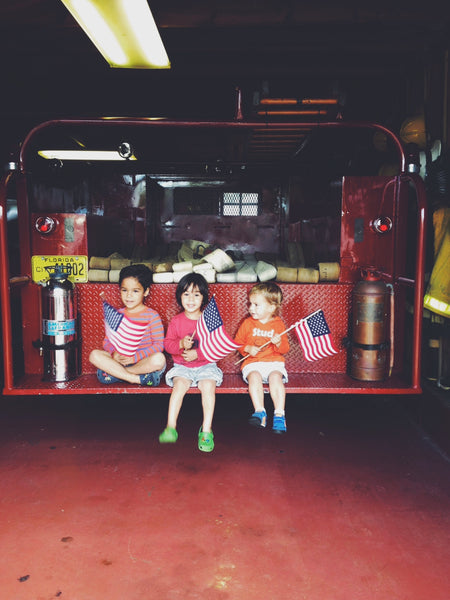
Smooth Bore
Never underestimate the effectiveness of a smooth bore nozzle.
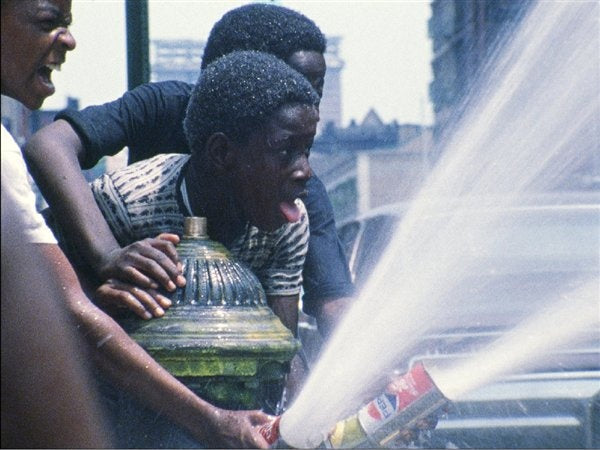
FDNY 9/11 2nd Alarm
Great footage and tactics of FDNY 2nd alarm. It's nice to see fire companies working and anticipating what the fire might do and not playing catch-up. Here is a good example of that.
Movember
As firefighters, movember and having the best damned mustache on the planet has become a near requirement. If we don't hold the standards high who will? So, unless you're hairy like an ape and you have 5 o'clock shadow by 10:00 am, now is a good time to start growing. Here's some inspiration.

Escape the Cold; Learn Highrise Firefighting
Of the many conferences that happen all over the country, the high rise conference hosted by CF Tactics is one of the few that seems like it will be an unforgettable experience. The instructors, the venue, and the location are all outstanding. And for you Northerners, escaping the cold for a weekend in P-Cola would be worth the price. Click here to read more about the conference.
In the Shop
We've restocked the iphone cases and in the key fobs are back and better than ever. Now, you can choose between four types of leather and brass or silver hardware. Check em' out.
Fireman Jim Flynn September 08 2013, 8 Comments
On February 13, 1917 Fireman Jim Flynn entered the ring with a young up-and-comer Jack Dempsey. Jim Flynn who had passed the height of his career charged to the center of the ring and quickly sent the Manassa Mauler to ground with a devastating right. Twenty seconds later, Dempsey was still trying to find his feet. Here is an account of the knockout.
'With Dempsey still bent over and walking toward Flynn, both forearms and gloves covering his face, Flynn rushed again. The Pueblo battler gave Dempsey's head a quick shove toward his right and sent a short right hand hook through Dempsey's guard and straight to the point of the chin. (Salt Lake Telegram)
Dempsey was down 10 seconds in to the bout.'
That quick, embarrassing loss was the only time in Jack Dempsey's storied career (66-6-11) that the future champion was ever knocked out and it was the highlight of Jim Flynn's career, a fighter who 'fought them all' but never earned the heavyweight title. For a time, Fireman Jim Flynn was the best hope of defeating the feared Jack Johnson but was never able to best the 'Galveston Giant' in three tries. Jim Flynn was famous however for knocking out aspiring contenders with such neatness that he became known as the 'Destroyer of Hopes.' Jim Flynn ended his career with 47 wins, 41 losses, and 17 draws.
Early Life
Jim Flynn was born in Hoboken, NJ with name Andrew Chiariglione. He was actually of Irish-Italian descent, but took the name Jim Flynn for professional purposes as the Irish were some of the most devoted boxing fans at the time. When Flynn was a young man, the family moved to Pueblo, CO where he took up railroading and became a fireman for the Pueblo Fire Department and the Denver and Rio Grande Railroad. Jim Flynn remained with the fire service throughout most of his boxing career.
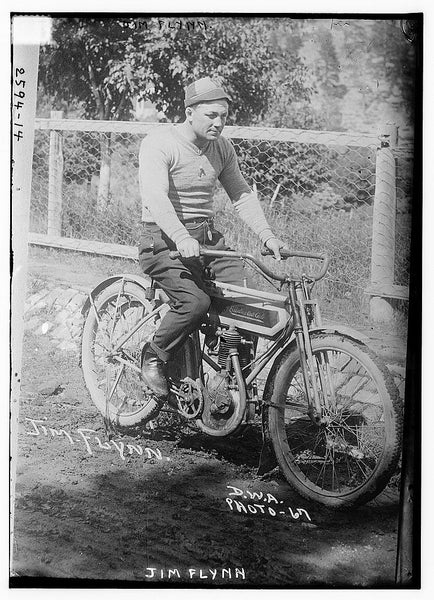
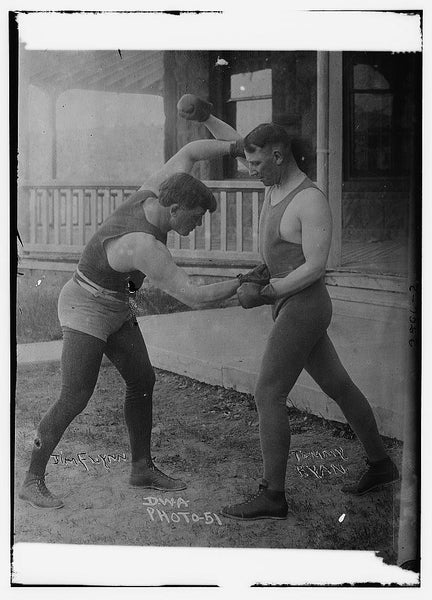



Inspiration
While researching ideas, the legendary knockout of Jack Dempsey, the Manassa Mauler combined with the workman-like boxing career of the underdog Jim Flynn inspired us to create a design honoring Flynn for Hook & Irons. Choosing the the designer was easy for this one. Steve Wolf specializes in hand-drawn art and works frequently with different sports topics. Additionally, he is a collector of vintage boxing artifacts and he seemed as excited, if not more, to bring this idea to life. As there is no poster for this event that we know of that still exists, we asked Steve to imagine a poster for the bout using the style of lettering and drawing that was popular at the time. We also asked him to draw his best rendition of Jim Flynn. The final design couldn't be more striking than the photo he worked from. We hope you enjoy the design and the small piece of history where the workman--the fireman--the boxer--the constant fighter--won one for the underdog.
The Last Great Fire of New York City - 1845 September 04 2013, 0 Comments
Before dawn on July 19, 1845 a fire broke out on the third floor of a whale oil store on New Street (located in lower Manhattan). An influx of early morning business and mild summertime temperatures might have aided in putting a quick stop to the blaze, but a warehouse located just a block away from the oil store was filled with a new shipment of salt peter (which is used in the manufacture of gunpowder). Fire spreading from the oil store extended through the warehouses iron shutters and caused, 'a series of cannon-like bursts of smoke and fire, almost like a volcano, smashing into buildings across the street. It culminated in a terrible final explosion completely engulfing the city block.' The blast was heard as far away as Sandy Hook, NJ.

The fire killed 4 firefighters (volunteers as the FDNY was not a paid department for another 20 years) and 26 citizens. Before the fire was contained and extinguished it destroyed 345 buildings and caused nearly 7 million dollars in damage. With all that devastation, the fire could have been worse. The Last Great Fire of NY was the the third in a series of horrific blazes. The first and second of which occurred in 1776 and 1835. The result of the first two fires was a change in building codes. All new buildings built in New York City had to be made of brick and mortar. This code and the newer stone buildings helped to slow the spread of the blaze and aid in its containment. The other significant aid to extinguishing the blaze was the recent completion of the Croton Resevoir which provided a steady supply of water throughout the conflagration.
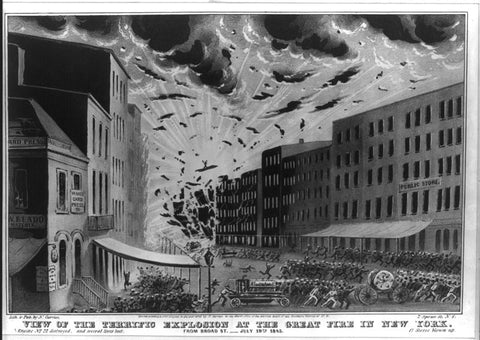
Here is an excerpt from a witness account of the blaze.
". . .an immense body of flame... it instantly penetrated at least seven buildings, blew in the fronts of the opposite houses on Broad Street, wrenched shutters and doors from buildings at some distance from the immediate scene of the explosion, propelled bricks and other missiles through the air, threw down many individuals who had gone as far as Beaver Street, spread the fire far and wide, so that the whole neighborhood was at once in a blaze, and most unfortunately covered up the [fire company's] hose.... After this the firemen could with difficulty obtain any control over the conflagration."
Inspiration
When we contacted Ryan Brown from the Pursuit of NY, we gave him very simple instructions. We wanted him to create a design that was historically significant to New York's history. We wanted it to be a fresh, new look for a t-shirt. The rest was up to him. We knew the problem wouldn't be coming up with an idea, more honing in on one great idea. The Last Great Fire tee is the result of all his research. The whale represents the whale oil store that was responsible for the blaze. The whale is also drawn into a rough shape of Manhattan and the blaze escaping from his mouth is roughly where the fire started. Located on the top and bottom of the whale are map icons for the East and North River with an anchor showing north and south and the date of the fire.

The Last Great Fire of New York City encompasses everything we look for when we make a shirt--a design that stands alone on its own merit and becomes more interesting once you learn the story behind the design. Ryan Brown is one of the great talents we've come across since starting H&I and if you're looking for cutting edge designs from one of the hippest indie labels out there, you should check him out at Pursuit of NY.
Historical Novel
While researching The Last Great Fire, I came across a mystery novel that takes place in 1845 New York and includes the The Last Great Fire in the novel. The Gods of Gotham written by Lyndsay Faye was one of Publishers Weeklys top ten Mystery/Thriller novels of the year. Lyndsay spent over a year researching the book before writing it and by all accounts is very historically accurate. Beyond that, I would recommend it as a very easy read.
The Last Great Fire of New York City changed the building codes in New York City and eventually played a part in unifying the fire service into what would become FDNY as we know it today. We're proud to release this shirt and recognize that from the ashes we rise and continue the mission of making the fire service better than it was before we found it.
Firewire 8/22-8/29 August 22 2013, 0 Comments
A mostly fire related, semi-occasional, mining of web type stuff.
This week we released 'The Bronx is Burning' tee and so far it seems as if you guys like the shirt as much as we do. If you're interested in learning more about The War Years in the Bronx, here are all four parts of the BBC documentary Man on Fire. Each part is about 12 minutes long and give a true perspective of the time period.
Doing all the research for 'The Bronx is Burning' tee, I've found so many great videos and pictures from the time period. Here are a few more that didn't make the cut from the original blog.

George Steinbrenner, left, gives manager Billy Martin a bearhug and congratulations after the Yankees defeated the Kansas City Royals to take the 1977 AL championship
And the last New York thing I found (I promise) is a very cool before and after comparison to places in NYC.
This is a very interesting photo essay. You can see more by clicking here.
Collab with Ryan Brown from Pursuit of NY
Our new Bronx is Burning tee was designed by Pursuit of NY. They are, about the coolest indie label I've seen in a while. Check em out.
Cool Stuff, you'll Probably Never Need
A homemade adjustable wrench for all you doomsday preppers who are always preparing.
Parting Thought That Pertains To My Frame of Mind During Most EMS Calls
Enjoy your Thursday.
The Bronx is Burning August 18 2013, 3 Comments
The San Francisco Ladder Shop July 17 2013, 22 Comments
As time passes, it seems to me that there are less and less of those things that signify what is great about the fire service. Technology, increased safety, innovation, and time chip away at some of our most beloved symbols. Some changes are for the best and some are not. It's hard to argue the effectiveness of a well placed and expertly thrown aluminum ladder. It's also an easy pill to swallow when they break and can be replaced quickly and cheaply.
But they're not the best for everyone. San Francisco Fire Department has stuck with the wooden ladder for many reasons. First and foremost, there isn't a city in the world that has more high voltage lines running overhead. The city is made up of very steep and very narrow streets that make ladder truck access very difficult. And finally, the wind that whips off the bay is nothing to laugh at. With all that said, San Francisco Fire Department relies heavily on their ground ladders. They need to be heavy and stable. They need to be non-conductive.

They need to be made of wood. And while they are not the only department to use wooden ladders, they are the only department the builds their own ladders.
Since 1917 the San Francisco Ladder Shop has been building, designing and maintaining all the ladders for SFFD. They are the only ladder shop of its kind left in existence--a true testament to how strongly San Francisco feels about its ground ladders. At about $100 a linear foot, the ladders are not cheap, but when they break, these carpenters and craftsmen just repair the broken pieces and put the ladder back in service. SFFD has ladders in service that are over fifty years old and work just as good as the first day they were put into service.
We chose The San Francisco Ladder Shop as our latest Signature Design because of everything they signify--craftsmanship, quality and tradition. SFFD. is rich in tradition and everyone knows them by their helmet markings and their wooden ladders. In my estimation, they protect some of the most difficult urban geography and the most challenging building construction in the country. They don't continue to use wooden ladders out of stubbornness. They use them because they are the right tool for the right place.
When we called up Tom Lane and asked him if he would be interested in designing a shirt that would honor the craftsmen of the shop, he jumped all over it. He knew that he would have to create something that was organic, natural and created by hand. When we saw the finished design we were so happy that we wanted to do something special with it. So we called a small local print shop that deals in fine art and had them make a limited run of 150 prints.
This has been a great project to work on. My favorite yet. We hope you guys like this design as much as we do.
Through the Lock June 02 2013, 0 Comments
Occasionally, we get inquiries about designs, custom orders, etc. We also get suggestions, and at-a-boys. We take all of these things seriously as we love hearing from all of you. Recently though, we were contacted by Brandon Link, a designer out of Pittsburgh who caught our attention with some pretty incredible ideas. What makes Brandon unique is that he is also a firefighter who works for Berkley Hills Fire Co. on Tower Ladder 247.
What was immediately apparent was that Brandon had obviously spent a great deal of time considering our brand, our style and our commitment to celebrating our great history. He offered up some great sketches and shortly after we had a great design that gives the K-Tool its due justice.

Link ventilating the second floor windows and opening the soffit for the hose team inside
Those that have used the K-Tool know that the ‘finesse’ approach, through the lock, is something that takes skill and confidence. Its usefulness is obvious when forcing commercial plate glass doors and when minimizing damage upon entry is a priority. The K-Tool was invented and patented by Lieutenant William McLaughlin (FDNY). McLaughlin was also a registered locksmith. Additionally, he worked in the South Bronx on 19 Truck. And later he became the 3rd, 2nd, and 1st Fire Commissioner at FDNY. His contributions to the fire service cannot be understated. Decades old, the K-Tool is still the most popular lock puller sold today.

From inception to final design
Example of K-Tool at work (ignore crappy hooligan)
Highlighting the K-Tool and showcasing the work of firefighter/designer Brandon Link is the type of project we’re always looking for.
Legacy Built.
Fire Forged.
Wear it with pride. Hook & Irons K-Tool shirt.



